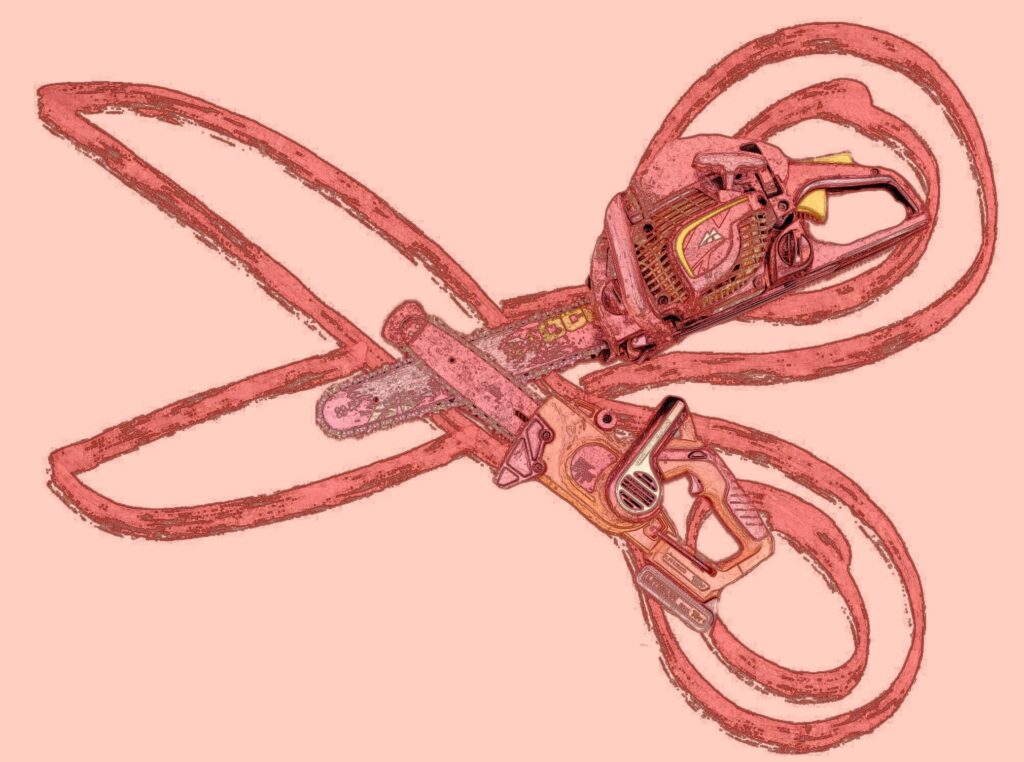
For seven years, Argentina was ruled by an authoritarian, right-wing military dictatorship. Censorship, repression, torture and extermination were the order of the day. Tens of thousands of people suspected of being political opponents lost their lives. After the end of the dictatorship and the restoration of democracy, a diverse culture of remembrance emerged. The period of dictatorship is dealt with in literature and academia, in memorial sites and educational work.
And also in art: in 1983, after the end of the Argentinean military dictatorship, the artist Marta Minujín created the series “La caída de los mitos universales” (The fall of the universal myths). This also included “El Partenón de libros” (1983): 25,000 books that were banned during the dictatorship covered a metal structure in the style of the Greek Parthenon. Decades later, a second, even larger “Parthenon of Books” was created at documenta 14 in Kassel in 2017, which now had the original dimensions of the Greek temple.
The Kasseler Liste goes back to this artwork: The list of banned books that a team from the University of Kassel and the University of British Columbia, Vancouver, compiled for the “Parthenon” formed the basis for our database.
Currently, the Kasseler Liste contains approx. 1.000 hits for Argentina.
At the start of the project in 2019, we received permission to integrate the database “Libros que muerden” (https://grupolagrieta.wordpress.com/biblioteca/libros-que-muerden/). Under this title, the Grupo La Grieta from La Plata had collected censored children’s and young adult’s literature. These texts had been banned in the so-called “Operación Claridad” in order to prevent even the youngest children from being exposed to “false” messages, e.g. messages questioning official state values. 194 titles from the “Libros que muerden” project, which was published by the Biblioteca Nacional Mariano Moreno in 2014, can be found on the Kasseler Liste.
Additionally, the original team compiling the Kasseler Liste was able to locate 137 titles through individual research.
Today, we add 669 new books to our database. These items were also banned during the military dictatorship in Argentina. We found them in an exhibition catalog of the Archivo Provincial de la Memoria in Córdoba. Since 2007, its permanent exhibition includes a “Biblioteca de libros prohibidos” – the first in Argentina! The exhibition catalog was created in 2012 (https://archive.org/details/CatalogoLibrosProhibidos/page/n3/mode/2up). This catalogue features an apt characterization of the cultural policy of the time: “The plan of systematic extermination was supplemented by a complementary project of cultural repression; one of the focal points of this destruction was therefore books and the entire universe of ideas surrounding the activity of reading.”
Argentina today is a democracy: Article 14 of the Argentinian constitution guarantees freedom of expression as a civil right. Nevertheless, freedom of the press in particular is increasingly under threat. Between December 2023, when Javier Gerardo Milei took office, and 2024, when “Reporters without Borders” published their annual press freedom ranking, Argentina had fallen from 40th to 66th place. Journalists are increasingly being intimidated, experiencing verbal and physical attacks. The state news agency has been closed. The topical image of the chainsaw, which Milei himself uses to signify his radical austerity policy, not only stands for the destruction of state functions. It also stands for an attack on the institutions sustaining national cultures of remembrance and for a new suppression of the freedom of expression.
Die Kasseler Liste, April 2025